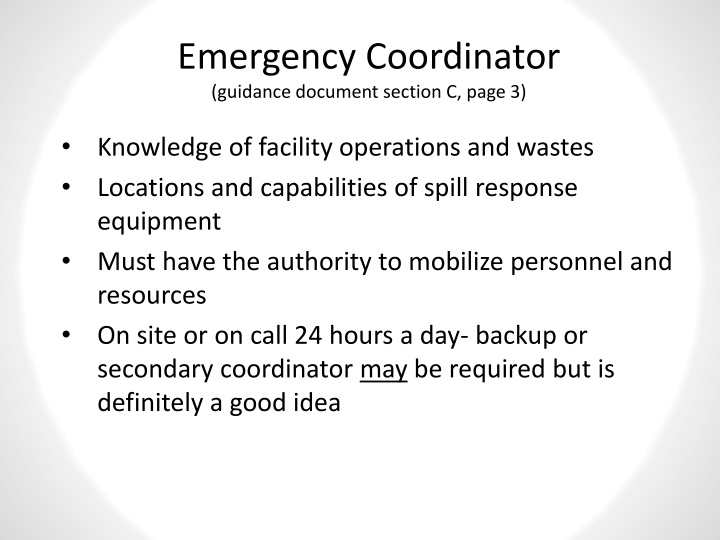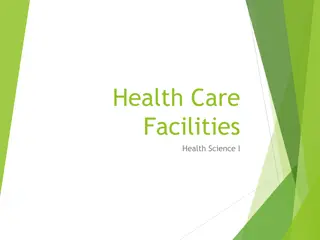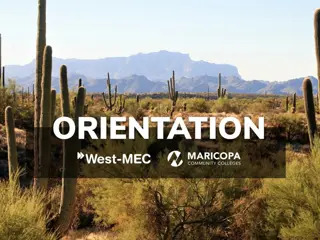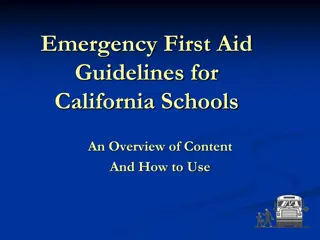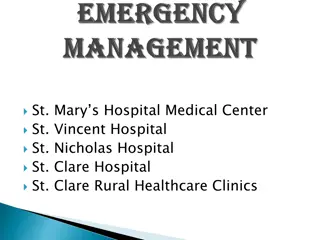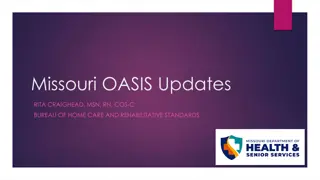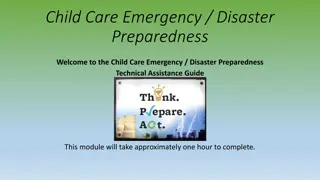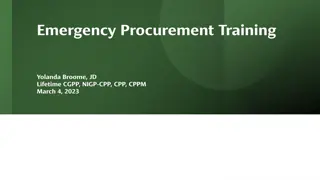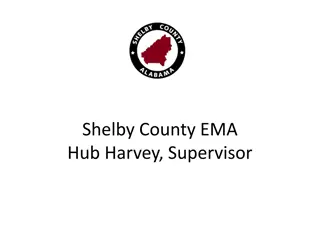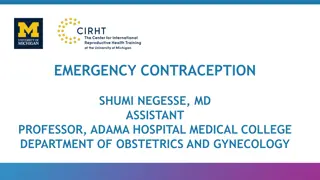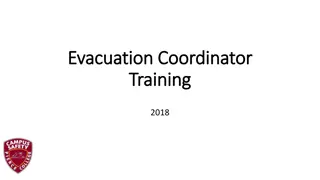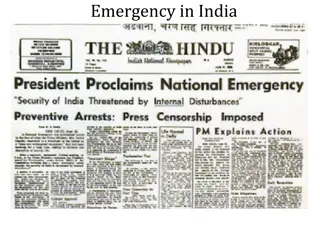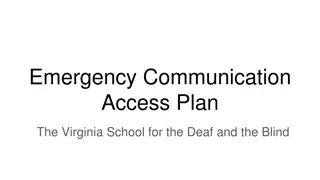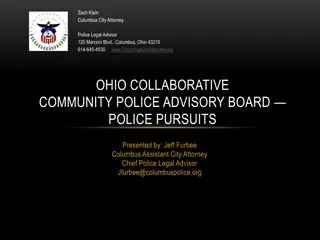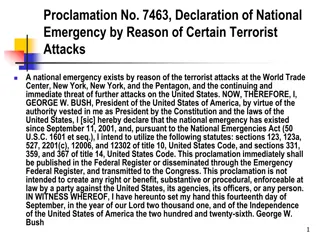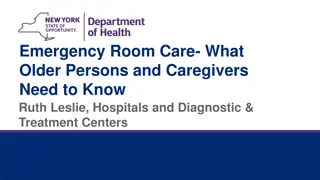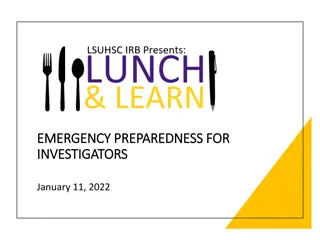Essential Emergency Coordinator Guidelines for Facilities
This guidance document outlines the key responsibilities and requirements for an emergency coordinator at a facility. It covers the knowledge needed for facility operations, spill response equipment, authority to mobilize resources, and protocols for handling fire, spills, and other incidents. Additionally, it emphasizes the importance of posting emergency information, providing appropriate emergency equipment, and ensuring equipment maintenance for effective emergency response.
Download Presentation

Please find below an Image/Link to download the presentation.
The content on the website is provided AS IS for your information and personal use only. It may not be sold, licensed, or shared on other websites without obtaining consent from the author.If you encounter any issues during the download, it is possible that the publisher has removed the file from their server.
You are allowed to download the files provided on this website for personal or commercial use, subject to the condition that they are used lawfully. All files are the property of their respective owners.
The content on the website is provided AS IS for your information and personal use only. It may not be sold, licensed, or shared on other websites without obtaining consent from the author.
E N D
Presentation Transcript
Emergency Coordinator (guidance document section C, page 3) Knowledge of facility operations and wastes Locations and capabilities of spill response equipment Must have the authority to mobilize personnel and resources On site or on call 24 hours a day- backup or secondary coordinator may be required but is definitely a good idea
Responsibilities: In the event of a fire, call the fire department or attempt to extinguish the fire In the event of a spill, contain the hazardous waste and clean up the waste and any contaminated surfaces, materials or soils; and In the event of fire, explosion, or any other incident, contact the National Response Center (call 1-800- 424-8802) and the DEQ 24-hour Emergency Response Hotline (call 1-800-522-0206)
Posting Emergency Information Next to the Telephone The name and telephone number of the emergency coordinator (and backups) Location of fire extinguishers and spill control material, and, if present, fire alarms Telephone number of the fire department, unless the facility has a direct alarm Telephone number of emergency response contractor Make sure information is accurate (update when necessary) See page C-4 for a template/example page
Provide Appropriate Emergency Equipment Unless none of the hazards posed by the facility could require a particular type of equipment (can you prove that?) Emergency response equipment typically includes: Internal communication or alarm system capable of providing emergency instructions to facility personnel A telephone, a hand-held two-way radio, a cell phone or other device capable of summoning emergency assistance Fire-control equipment, spill-control equipment and decontamination equipment; and
Provide Appropriate Emergency Equipment Continued Emergency response equipment typically includes: Water at adequate volume and pressure to supply a water hose or foam-producing equipment or automatic sprinklers or water spray systems All facility communications or alarm systems, fire protection equipment, spill-control equipment and decontamination equipment must be tested and maintained as necessary to assure its proper operation in time of emergency
Making Emergency Response Arrangements You must attempt to make arrangements with local authorities (page 6) fire department (maybe they already visit?) emergency response contractors (who can you call to help or clean up spills?) Police local hospitals Familiarize the local authorities with the layout, waste located at you facility, and the types of injuries or illnesses that could result from fires, explosions, or releases at your facility. The information given to the authorities should include: the layout of the facility types of waste and the hazards associated with the wastes at your facility where personnel would be working entrances to the facility and possible evacuation routes and
Making Emergency Response Arrangements These communications should be documented and maintained at your facility They could be in the form of phone logs, certified mail receipts, or email logs Isn t this overkill since emergencies never happen in Oklahoma? Tornadoes, Winds, Flash floods, Earthquakes, Hail, Heat, Cold, Ice, Lightning, Fire Bubba driving the forklift into the drum storage area while texting (unforeseen emergencies)
